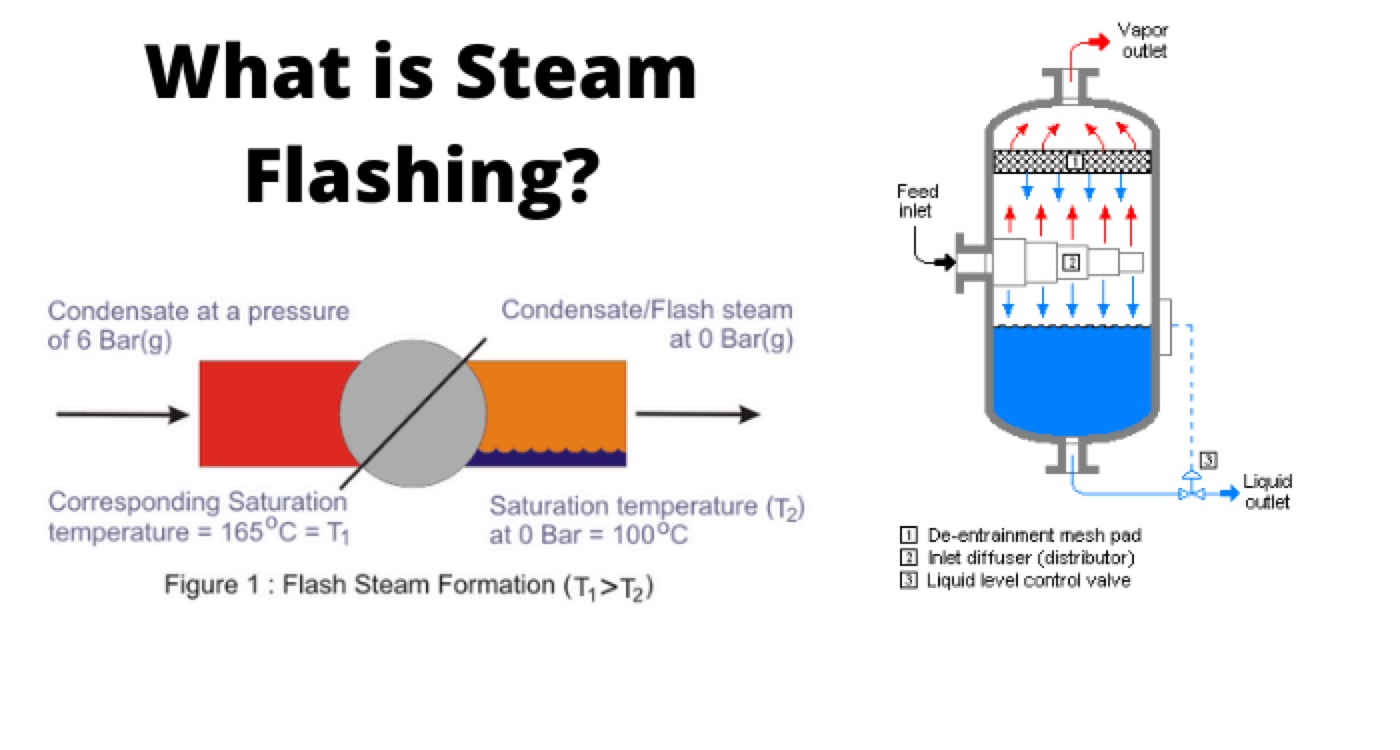Understanding Steam Flashing and Its Applications

Steam flashing is a phenomenon that occurs when pressurized condensate is exposed to a lower pressure, causing some of the water to vaporize into steam. This process can be used to recover energy from the condensate and utilize it for various purposes. In this article, we will explain what steam flashing is, how it differs from normal steam generation, how it can be calculated, and what are its effects and applications.
What is Steam Flashing?
Steam flashing is defined as the formation of steam from hot condensate when it is released at reduced pressure. This happens because the condensate has more energy than it can contain at the lower pressure, and this excess energy is used to convert a portion of the condensate into steam.
For example, if we have 1 kg of condensate at 6 bar (g) and 165 °C, and we release it to atmospheric pressure (0 bar (g)), some of the condensate will flash into steam. The amount of flash steam produced depends on the enthalpy (heat content) of the condensate and the saturation temperature (boiling point) of water at the lower pressure.
How Does Steam Flashing Differ from Normal Steam Generation?
Normal steam generation involves heating water in a boiler or a waste heat recovery steam generator (HRSG) by using a primary or secondary fuel source, such as coal, gas, oil, or biomass. The water is heated until it reaches its saturation temperature at a given pressure, and then it evaporates into steam.
Steam flashing, on the other hand, does not require any external heat source or fuel. It is an automatic phenomenon that depends on the condensate parameters (pressure and temperature) and the system parameters (pressure drop). Flash steam is generated when high-pressure condensate before a steam trap is exposed to a large pressure drop during its exit.

How Can We Calculate the Amount of Flash Steam Produced?
The amount of flash steam produced can be calculated by using the following formula:

Flash steam control: Flash steam can also be controlled and regulated using devices such as pressure-reducing valves, orifice plates, or flash steam recovery systems. These devices can reduce the pressure and temperature of the condensate to a desired level, and allow the flash steam to be used for different purposes.
Flash steam safety: Flash steam can pose safety hazards if it is not properly handled or vented. Flash steam can cause burns, scalds, or explosions if it comes in contact with people or equipment. To ensure safety, flash steam should be isolated from personnel and equipment using insulation, guards, or barriers, and vented through safe locations.
Conclusion
Steam flashing is a phenomenon that occurs when pressurized condensate is exposed to a lower pressure, causing some of the water to vaporize into steam. This process can be used to recover energy from the condensate and utilize it for various purposes. Steam flashing differs from normal steam generation in that it does not require any external heat source or fuel.
The amount of flash steam produced can be calculated by using a formula based on the enthalpy of the condensate and the saturation temperature of water at the lower pressure. Steam flashing has several effects and applications in various industries and processes, such as energy recovery, condensate return, water hammer prevention, flash steam control, and flash steam safety. Steam flashing should be properly handled and vented to avoid any hazards or damages.
Statement: Respect the original, good articles worth sharing, if there is infringement please contact delete.
Electrical4U is dedicated to the teaching and sharing of all things related to electrical and electronics engineering.














